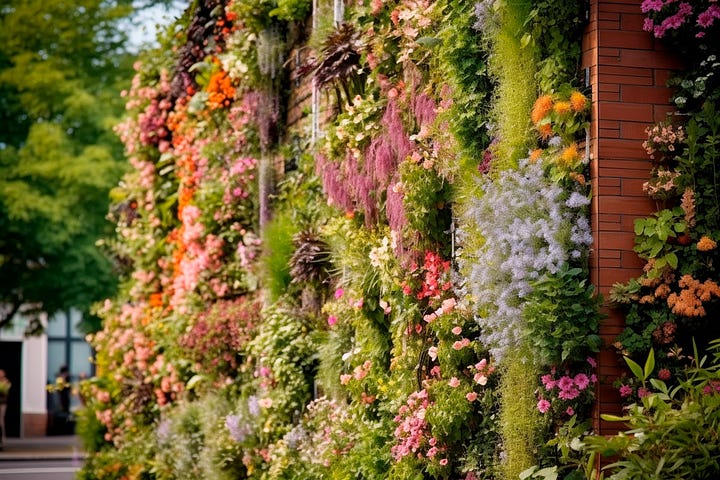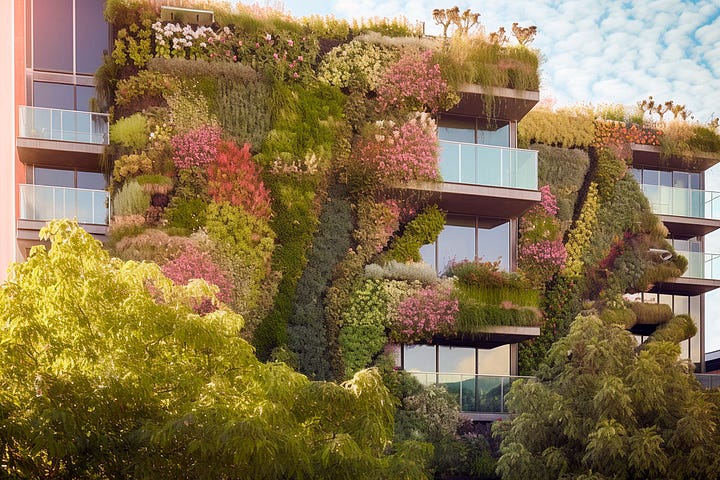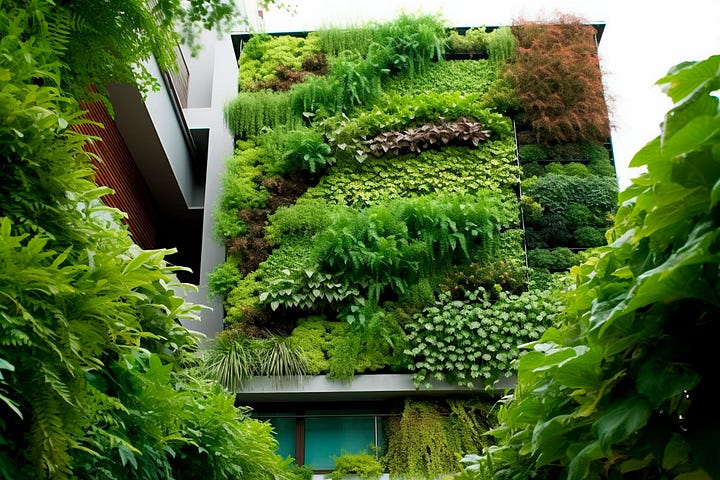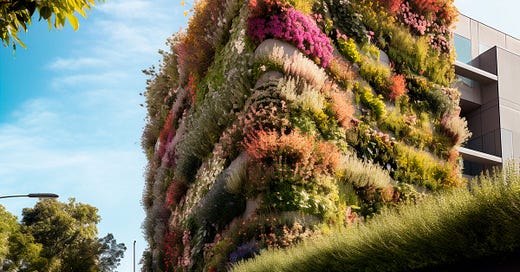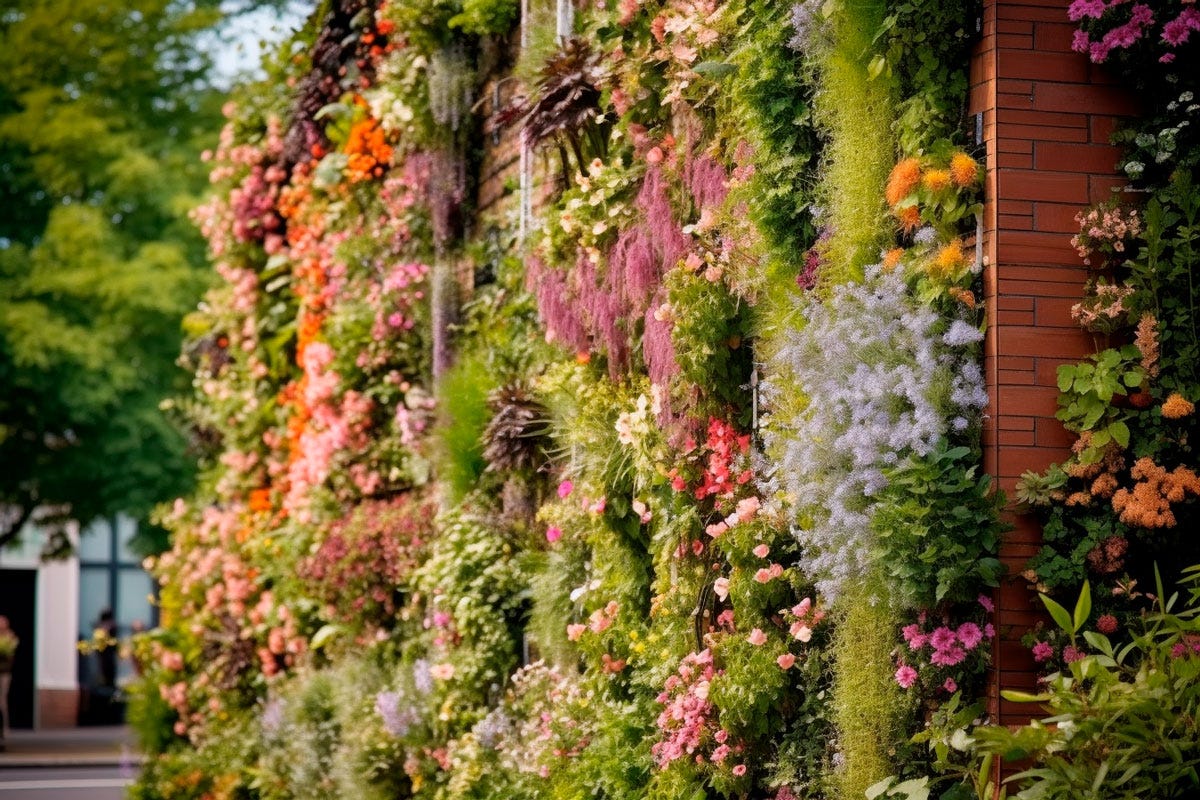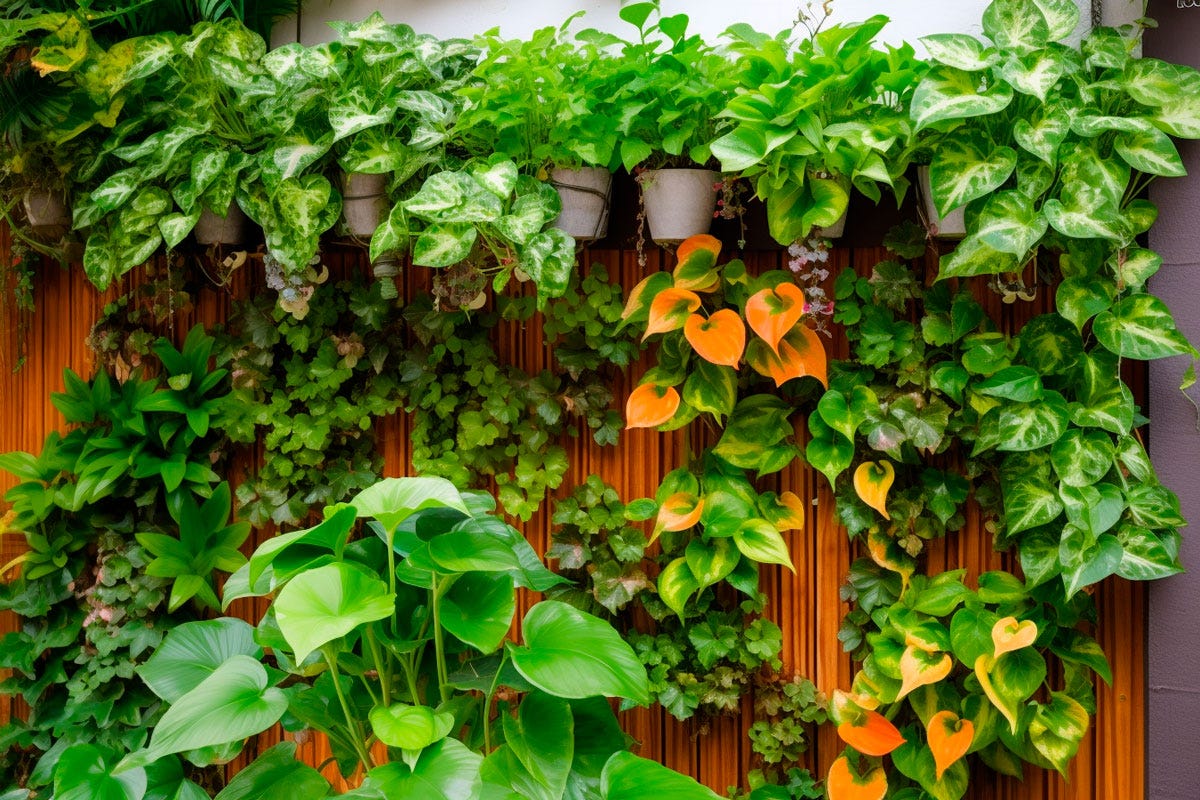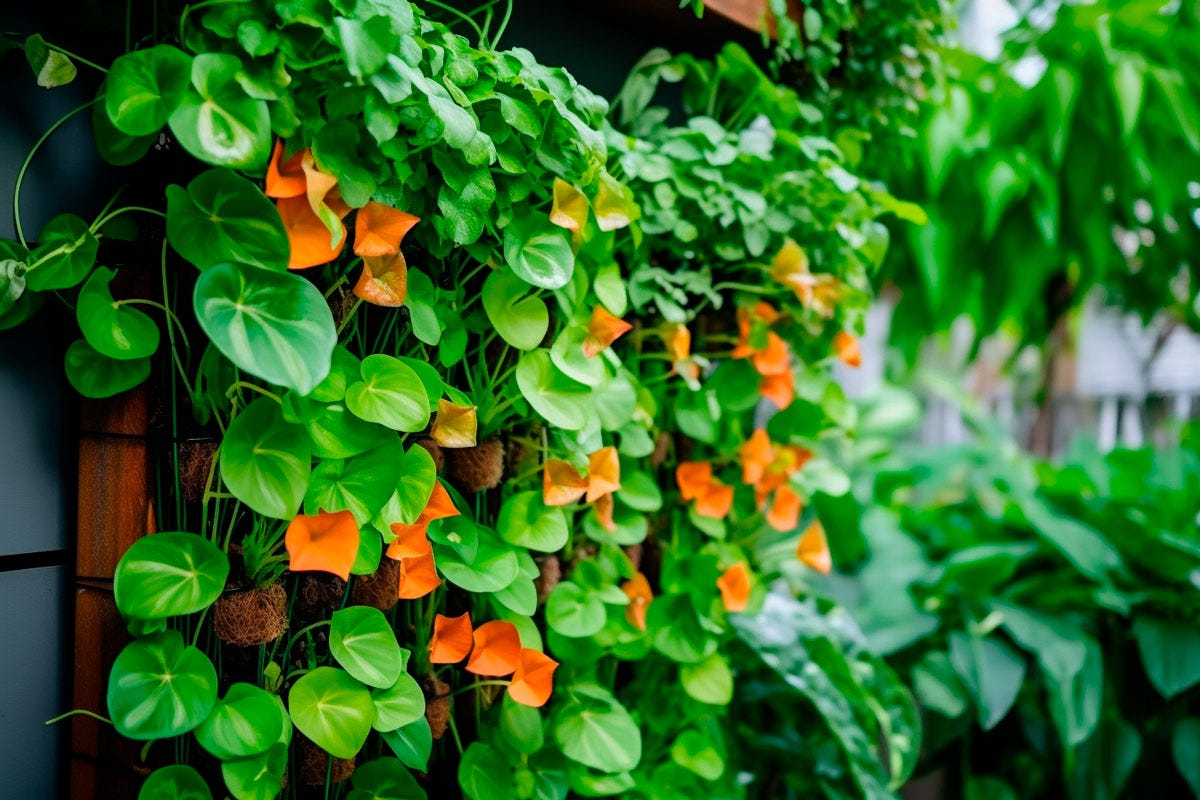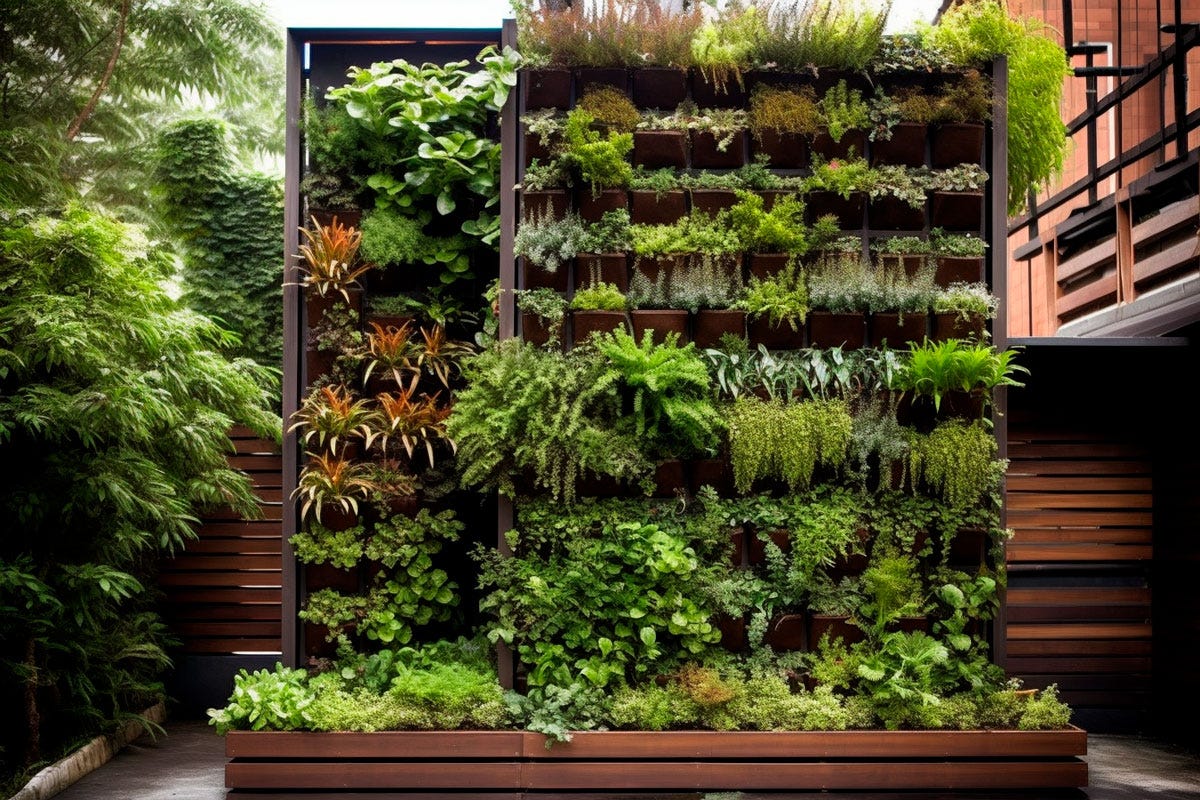From Concrete to Canvases: A Step-by-Step DIY Guide to Unleash Art with Vertical Gardens
Discover the Evolution, Construction, and Care of Vertical Gardens, Emphasizing Safe and Eco-Friendly Approaches to Pest and Disease Control
“To my amazing paid subscribers, I want to extend my heartfelt gratitude to each and every one of you who make this newsletter possible. Your support at just $2 per week drives my mission to bring you valuable insights and information in this fascinating field. Your commitment to this publication is truly inspiring, and I am humbled by your dedication. Your contributions play a vital role in nurturing this community of plant enthusiasts and professionals. Thank you for being an essential part of this journey.”
-Murnau Den Linden
Short on time? Here’s a summary of our discussion today:
🏺 History: Vertical gardens have a long historical background dating back to ancient civilizations.
💻 Present: Modern vertical gardens are popular due to their aesthetic appeal, space-saving benefits, and positive impact on air quality and well-being.
📦 Materials: Gather materials such as wooden pallets, PVC pipes, or repurposed containers for the base structure.
🤔 Strategy: Plan the layout considering sunlight exposure, irrigation systems, and plant selection.
🌸 Species: Choose plants suitable for vertical growth and their specific lighting and water requirements.
🛠️ DIY: Follow step-by-step instructions for construction, including securing containers and creating a watering system.
🚧 Safety: Measures for DIY Projects.
🐛 Maintenance: Combat pests and diseases without jeopardizing the health and safety of residents.
👋
Dear Green Thumb Enthusiasts,
In this edition, we'll walk together through the essential steps to build our very own vertical garden using recycled materials. We'll delve into strategic planning, offering insights on sunlight exposure, irrigation systems, and the art of selecting plant species that thrive in vertical environments. With my step-by-step DIY instructions, you'll have all the tools you need to construct your masterpiece, ensuring both safety and aesthetic brilliance.
But that's not all! We'll also address the important topic of maintenance, sharing tips and tricks to keep your garden thriving while fending off pests and diseases. After all, we want your green haven to remain a source of joy and serenity for years to come.
So, my fellow gardening enthusiast, join me on this journey as we uncover the secrets and wonders of vertical gardens. Let your creativity bloom, and together, let's embrace the beauty of nature in a truly unique, sustainable and artistic way.
Let’s defy gravity together!
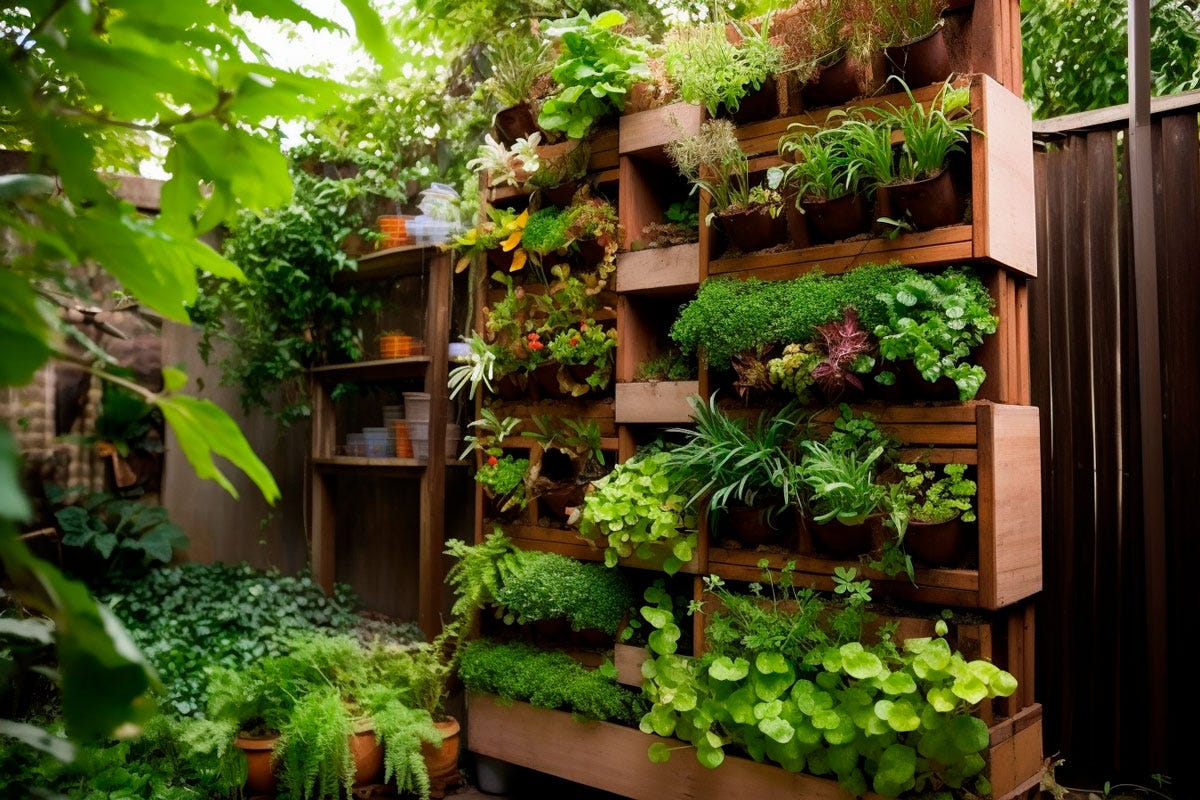
🎨 From Concrete to Canvases: A Step-by-Step DIYGuide to Unleash Art with Vertical Gardens
In a world where concrete jungles dominate our urban landscapes, the allure of nature beckons us with an irresistible call. But what if we told you that you could bring nature to the very heart of the city, defying the limitations of space and transforming bare walls into lush, living tapestries? Enter the captivating world of vertical gardens, where innovation, sustainability, and a touch of magic intertwine.
Vertical gardens, also known as living walls or green walls, are not just an ancient horticultural concept revived; they are a testament to human creativity and our unyielding quest to reimagine the possibilities of urban spaces. Picture a stunning array of plants cascading down towering buildings, breathing life into cold, sterile structures and creating a breathtaking visual spectacle that captivates the senses.
This modern marvel has its roots in the age-old desire to be closer to nature, but it has evolved into something far more than that. Vertical gardens have become a symbol of our collective commitment to sustainability, innovation, and holistic urban design. By seamlessly blending architecture and nature, we are reshaping our cities into vibrant, ecologically conscious havens that harmonize with the natural world.
The rise of vertical gardens is not a coincidence; it is a response to the urgent need for greener, healthier cities. As urban populations swell and available space diminishes, we are compelled to look upward and unlock the potential of vertical surfaces. From the exterior facades of towering skyscrapers to the interiors of commercial spaces, vertical gardens provide an oasis of greenery in the midst of concrete and glass.
But the magic of vertical gardens extends far beyond their aesthetic appeal. These living walls act as nature's air purifiers, absorbing carbon dioxide and releasing oxygen, effectively mitigating the negative effects of pollution and improving the air quality of our bustling metropolises. They serve as natural insulators, reducing energy consumption by cooling buildings in summer and providing additional warmth during winter months. Vertical gardens are an architectural innovation that embraces the principles of sustainability, seamlessly integrating ecological solutions into our built environments.
In this modern era of cutting-edge technology and digital connectivity, vertical gardens have embraced innovation to ensure their success. Advanced irrigation systems, precise nutrient delivery, and modular designs have revolutionized the way we create and maintain these verdant masterpieces. Smart sensors and automated monitoring systems help optimize water usage, ensuring efficient irrigation and reducing waste. Vertical gardens have become a living testament to our ability to merge nature and technology, creating a harmonious symbiosis that celebrates the wonders of both worlds.
Moreover, vertical gardens have a profound impact on our well-being, both individually and collectively. Studies have shown that being in the presence of nature reduces stress, improves mental health, and enhances cognitive function. By integrating vertical gardens into our urban environments, we foster a sense of connection with the natural world, providing urban dwellers with a respite from the fast-paced, high-stress environments that surround them.
Vertical gardens are the cutting edge of modern horticulture, where nature's beauty and human ingenuity converge. They are a testament to our collective commitment to sustainable living, a bold declaration that we can forge a harmonious relationship between urban development and the natural world.
🛠️
Creating Your DIY Vertical Garden
1. Gathering Materials
One of the beauties of DIY vertical gardens is their versatility and the ability to utilize recycled materials. Start by collecting items such as wooden pallets, PVC pipes, plastic bottles, or repurposed containers. These materials not only reduce waste but also add a unique touch to your vertical garden.
2. Design and Planning
Before diving into construction, take some time to plan your vertical garden layout. Consider factors such as sunlight exposure, irrigation systems, and the types of plants you wish to grow. Sketch out a design to visualize how the garden will look once completed.
Materials Needed for Creating Your DIY Vertical Garden
Wooden pallets or repurposed containers: These will serve as the base structure for your vertical garden. Look for sturdy and weather-resistant options.
PVC pipes or plastic bottles: These can be used as plant containers or as a watering system for your vertical garden. Cut them into appropriate sizes and drill holes for drainage.
Moisture-retaining fabric: This fabric will help prevent water leakage and protect your walls. Choose a durable and water-resistant material.
Potting soil or growing medium: Ensure you have enough soil or growing medium to fill the containers or pockets of your vertical garden. Opt for a well-draining mix suitable for your chosen plants.
Plants (see below this section for more details): Select plants that are suitable for vertical growth and thrive in your local climate. Consider options like ivy, ferns, succulents, or herbs. Choose plants that have similar water and light requirements to simplify maintenance.
Wall anchors or hooks: Depending on the weight and size of your vertical garden, you may need wall anchors or hooks to securely fasten it to the wall. Ensure they are appropriate for the type of wall you are working with.
Irrigation system (optional): If you prefer automated watering, consider installing a drip irrigation system. This will require additional materials such as tubing, connectors, and a timer.
Basic tools: Gather essential tools such as a drill, screws, screwdriver, measuring tape, and a level. These will be necessary for assembling the vertical garden structure and securing it in place.
Fertilizer: Depending on the plant's nutritional requirements, choose a suitable fertilizer to nourish your vertical garden and promote healthy growth.
Gardening gloves and safety goggles: Protect your hands and eyes while working with tools and materials. Gardening gloves and safety goggles are essential for your safety.
3. Plant Selection
Choosing the right plants is crucial for the success of your vertical garden. Opt for species that are well-suited to vertical growth, such as ivy, ferns, succulents, or herbs. Take into account the lighting conditions and the water requirements of each plant to ensure they thrive in their new vertical habitat.
Here's my Top10 list of favorite species suitable for vertical growth:
Ivy: Ivy is a versatile vine that thrives in vertical gardens. It has beautiful foliage and can be trained to climb walls or cascade down. Ivy prefers partial shade and moderate watering.
Ferns: Ferns are excellent choices for vertical gardens due to their graceful fronds. They prefer shaded or partially shaded areas and require consistent moisture.
Succulents: Succulents, such as Echeveria and Sedum, are drought-tolerant plants that store water in their leaves. They are ideal for vertical gardens as they require minimal maintenance and prefer sunny locations.
Herbs: Herbs like basil, thyme, and mint can be grown vertically, adding fragrance and flavor to your space. They thrive in sunny spots and require regular watering.
Spider Plant: Spider plants have long, arching leaves that cascade beautifully in vertical gardens. They tolerate a range of lighting conditions, making them adaptable to different environments.
Pothos: Pothos, also known as Devil's Ivy, is a popular choice for vertical gardens. Its trailing vines and heart-shaped leaves add a touch of elegance. Pothos can tolerate low light and irregular watering.
Nasturtium: Nasturtium is a flowering plant that adds color and charm to vertical gardens. It prefers full sun and moderate watering, producing vibrant blooms in various shades.
Air Plants: Air plants, or Tillandsias, are epiphytic plants that don't require soil. They can be attached to vertical structures and thrive in bright, indirect light. Air plants absorb nutrients and moisture from the air.
Philodendron: Philodendrons are tropical plants with lush foliage that adds a tropical feel to vertical gardens. They prefer bright, indirect light and moderate watering.
Strawberry: Strawberries can be grown vertically in hanging baskets or stacked containers. They require full sun and consistent moisture for healthy fruit production.
4. Construction
With your materials gathered and plants selected, it's time to start building your vertical garden. Follow the step-by-step instructions provided in our detailed tutorial, which will guide you through the process of assembling the structure, securing containers, and creating an efficient watering system. Don't forget to add a layer of moisture-retaining fabric to prevent water leakage and protect your walls.
Step-by-step guide: Bring your DIY vertical garden to life
Follow these step-by-step instructions to create your own green oasis using recycled materials.
Prepare the base structure:
If using wooden pallets, ensure they are clean and in good condition. Remove any loose boards or nails that may pose a safety risk.
If repurposing containers, clean them thoroughly and ensure they are suitable for holding soil and plants.
Install moisture-retaining fabric:
Cut the moisture-retaining fabric to fit the back and sides of your vertical garden structure.
Attach the fabric securely to the structure, making sure it covers the entire surface.
This fabric will help retain moisture, prevent soil erosion, and protect your walls.
Create plant containers or pockets:
If using PVC pipes, cut them into sections of the desired length. Drill several drainage holes along the bottom of each pipe.
If using plastic bottles, cut off the top portion and drill holes at the bottom for drainage.
Arrange the pipes or bottles vertically, attaching them securely to the base structure. Leave enough space between each container for plant growth.
Fill the containers with soil or growing medium:
Fill each container or pocket with potting soil or a suitable growing medium, leaving some space at the top to prevent overflow when watering.
Ensure the soil is well-draining and appropriate for the plants you have selected.
Choose and plant your greenery:
Select plants that are well-suited for vertical growth and thrive in your local climate.
Carefully remove the plants from their nursery containers and gently loosen the roots.
Plant each greenery into its designated container, pressing the soil firmly around the roots.
Consider arranging the plants strategically, considering their growth habits and aesthetic appeal.
Secure the vertical garden to the wall:
Use wall anchors or hooks to securely fasten the vertical garden structure to the wall.
Ensure the anchors or hooks are suitable for the weight and size of your vertical garden.
Use a level to ensure the structure is straight and properly aligned.
Optional: Install an irrigation system:
If desired, you can set up a drip irrigation system to automate watering.
Connect tubing and connectors to create a network of water supply lines.
Attach a timer to control the frequency and duration of watering.
Maintenance and care:
Regularly monitor the moisture levels of the soil and water the plants as needed.
Prune and trim the plants to maintain their shape and prevent overcrowding.
Fertilize the plants according to their specific needs, following the instructions on the fertilizer packaging.
Check the structure periodically for any signs of damage or instability, and make necessary repairs.
5. Installation and Maintenance
Once your vertical garden structure is complete, it's time to find the perfect spot to install it. Consider the available sunlight and the weight-bearing capacity of the wall. Ensure the garden is securely fastened to prevent any accidents. Take pride in your creation and enjoy the transformation of your space into a green oasis.
Watering and Irrigation
Proper watering is crucial for the health and vitality of your vertical garden. Depending on the plant selection, you may need to water your garden manually or install an automatic drip irrigation system. Regularly monitor the moisture levels and adjust the watering frequency accordingly.
Maintenance
Like any garden, vertical gardens require regular maintenance to thrive. Regularly inspect the plants for pests, diseases, and signs of stress. Prune and trim as necessary to maintain the desired shape and prevent overcrowding. Fertilize the plants as recommended and replace any dead or dying plants to keep your vertical garden vibrant and lush.
⚠️
Concerns about plagues and diseases
Vertical gardens, with their lush greenery hanging from building facades, have become a captivating sight in urban environments. However, as we admire the beauty and benefits of these vertical gardens, questions arise about how to effectively combat pests and diseases without jeopardizing the health and safety of residents. The close proximity of these gardens to living spaces necessitates careful consideration of the methods used to address such challenges. In particular, concerns about the use of chemical components to control pests and diseases raise important ethical and health-related questions. In this article, we will explore alternative approaches to pest and disease management in vertical gardens, focusing on eco-friendly and non-toxic methods that prioritize the well-being of both the plants and the people who share the space.
When it comes to maintaining a healthy and disease-free vertical garden, it's essential to prioritize natural and sustainable methods that ensure the well-being of both the plants and the residents living in close proximity. Using chemical components to combat pests and diseases can be risky, as it may pose potential health hazards and harm the delicate balance of the ecosystem.
Do you think your colleague or friend would benefit from This Is Horticulture's paid content? Perhaps it's time to send them a perfect birthday present!
⌛
By creating our own vertical gardens using recycled materials, we bring greenery into our space but also contribute to a more sustainable and eco-friendly lifestyle. The possibilities are endless when it comes to vertical gardening, so let your imagination soar and explore the creative possibilities of this environmentally and artistic conscious practice.
Whether it's herbs, flowers, or even vegetables, your vertical garden will serve as a testament to your commitment to a greener future. So, embrace the beauty and benefits of your living canvas, and let it inspire others to join you on the path towards a sustainable and flourishing world.
Flourishing wishes,

